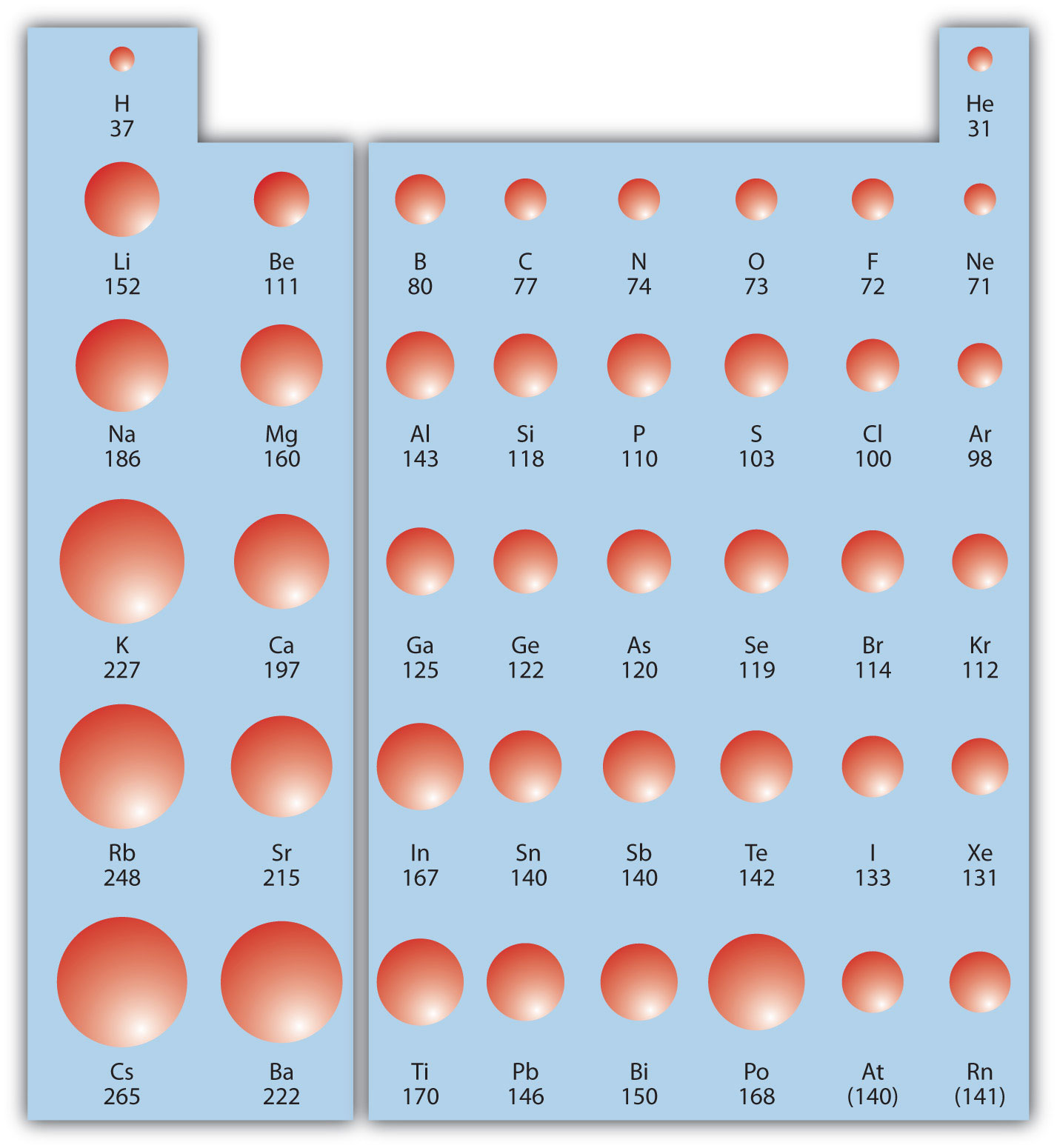

Note: The 4s orbital has a higher energy than the 3d in the transition elements. The pull of the increasing number of protons in the nucleus is more or less offset by the extra screening due to the increasing number of 3d electrons. The size is determined by the 4s electrons. The size of the atom is controlled by the 3-level bonding electrons being pulled closer to the nucleus by increasing numbers of protons - in each case, screened by the 1- and 2-level electrons.Īlthough there is a slight contraction at the beginning of the series, the atoms are all much the same size. In the period from sodium to chlorine, the same thing happens. If you don't know about hybridisation, just ignore this comment - you won't need it for UK A level purposes anyway. When these atoms are bonded, there aren't any 2s electrons as such. In each of these cases, before bonding happens, the existing s and p orbitals are reorganised (hybridised) into new orbitals of equal energy. Note: You might possibly wonder why you don't get extra screening from the 2s 2 electrons in the cases of the elements from boron to fluorine where the bonding involves the p electrons.

The amount of screening is constant for all of these elements. The increasing number of protons in the nucleus as you go across the period pulls the electrons in more tightly. (Look back to the left-hand side of the first diagram on this page if you aren't sure, and picture the bonding electrons as being half way between the two nuclei.)įrom lithium to fluorine, those electrons are all in the 2-level, being screened by the 1s 2 electrons. If you think about it, the metallic or covalent radius is going to be a measure of the distance from the nucleus to the electrons which make up the bond. Leaving the noble gases out, atoms get smaller as you go across a period. You aren't comparing like with like if you include the noble gases. All the other atoms are being measured where their atomic radius is being lessened by strong attractions. Because neon and argon don't form bonds, you can only measure their van der Waals radius - a case where the atom is pretty well "unsquashed". You have to ignore the noble gas at the end of each period. The reason is equally obvious - you are adding extra layers of electrons. It is fairly obvious that the atoms get bigger as you go down groups. It doesn't allow for the real world situation where you actually measure the radius in the way we are discussing here. You could only get this if you calculated the radius for isolated atoms. Note: You may come across a diagram like this which shows a decreasing trend across a period including the noble gases. Trends in atomic radius in Periods 2 and 3 The following diagram uses metallic radii for metallic elements, covalent radii for elements that form covalent bonds, and van der Waals radii for those (like the noble gases) which don't form bonds. The exact pattern you get depends on which measure of atomic radius you use - but the trends are still valid.

Trends in atomic radius in the Periodic Table Note: If you want to explore these various types of bonding this link will take you to the bonding menu. This measure of atomic radius is called the van der Waals radius after the weak attractions present in this situation. The attractive forces are much less, and the atoms are essentially "unsquashed". The right hand diagram shows what happens if the atoms are just touching. The type of atomic radius being measured here is called the metallic radius or the covalent radius depending on the bonding. This is what you would get if you had metal atoms in a metallic structure, or atoms covalently bonded to each other. The atoms are pulled closely together and so the measured radius is less than if they are just touching. The left hand diagram shows bonded atoms. The radius of an atom can only be found by measuring the distance between the nuclei of two touching atoms, and then halving that distance.Īs you can see from the diagrams, the same atom could be found to have a different radius depending on what was around it. Unlike a ball, an atom doesn't have a fixed radius. Important! If you aren't reasonable happy about electronic structures you should follow this link before you go any further. It assumes that you understand electronic structures for simple atoms written in s, p, d notation. This page explains the various measures of atomic radius, and then looks at the way it varies around the Periodic Table - across periods and down groups.


 0 kommentar(er)
0 kommentar(er)
